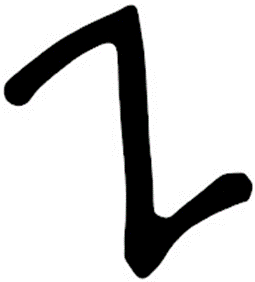2019. június 3.,
hétfő
Monday, June 3, 2019
Jeddito tál hieroglifikus mondata: Ak
a magas kő ura
A régiek esetenként
törekedtek arra, hogy az ősvallási nézeteket illusztráló, képszerű jelekből
alkotott hieroglifikus mondataik szimmetrikusak legyenek. Ezzel az eljárással,
amelyhez a magyar hieroglif írás jeleit használták,
a mondanivalót kívánhatták hangsúlyozni. (1)
Hieroglyphic phrase of the Jeddito plate: “Ak is the lord of the high stone"
In some cases, the
ancients strived to make their hieroglyphic sentences, made up of pictorial
signs, illustrating primitive religious views, to be symmetrical. With this
procedure, for which they used the signs of the Hungarian hieroglyphic writing,
they could have wanted to emphasize what they intended to say. (1)
1. ábra. A jeddito tál és jeleinek székely párhuzamai
Figure 1. Szekler
parallels of the Jeddito plate and its signs
A jelen cikkben
bemutatott jeddito tálon is egy szimmetrikus mondatot olvashatunk el. Az
olvasatot középről kell kezdeni és akár jobbra, akár balra indulunk el, a
fontosabb jelek alapján ugyanazt a szöveget kapjuk: Ak a magas kő ura.
Az utóbbi részlet a "magas kő ábrázolási konvenció" egyik
példája, amely a mondat három szavát rögzíti és egy lépcsős toronytemplom
rajzából alakult ki. Vannak a tálon további, kisebb méretű jelek is, amelyek
értelmét nem ismerjük s talán nem is feltétlenül kell őket elolvasni.
A symmetrical
sentence can also be read on the Jeddito plate presented in this article. The
reading must be started from the middle and whether we start to the right or to
the left, we get the same text based on the most important signs: “Ak a
magas kő ura” = Ak is the lord of the high stone. The latter part is
an example of the “”magas kő” = tall stone representational convention",
which captures the three words of the sentence and was developed from the
drawing of a stepped tower church. There are other, smaller signs on the bowl,
the meaning of which we do not know and perhaps do not necessarily need to be
read.
2. ábra. A jeddito tál
Figure 2. The Jeddito
plate
3. ábra. A jeddito
tál központi jele (balra) és a székely írás Ak "patak,
Heraklész" szójele (jobbra)
Figure 3. The
central sign of the Jeddito plate (left) and the word sign Ak "patak,
Heraklész" = stream, Herakles of the Szekler script (right)
4. ábra. A jeddito lépcsős toronytemplom ábrázolása három székely jelnek felel meg és a magas sar kő (mai magyarsággal a magas kő ura, vagy az úr magas köve, esetleg a magas úr kő) mondatot rögzíti
Figure 4. The depiction of the
Jeddito stepped tower church corresponds to three Szekler symbols and records
the phrase “magas sar kö” (in today's Hungarian, the lord of the high
stone, or the high stone of the Lord, or perhaps the high stone of the Lord)
Jegyzet
Notes
(1) Ez az
íráshasználati mód (a két, vagy több írásiránnyal párosuló szimmetria)
megtalálható hun és avar ékszereken is.
5. ábra. A hun eredetű meroving korongfibula középső Lyukó jeléből a négy fő irányba kiindulva négyszer olvasható el a Lyukó Isten országa mondat
Figure
5. From the central Lyukó symbol of the Merovingian disc fibula of Hun origin,
starting from the four main directions, the sentence “Lyukó Isten országa”
= Lyuko is the country of God can be read four times
Irodalom
Literature
Lyukó isten
országa hieroglifikus mondat egy meroving bogláron
(Lyuko is the country of the God is a hieroglyphic sentence on a
Merovingian buckler)
(The Hungarian
hieroglyphs of the Avar buckler from Kölked)
Kérdés
és felelet a "magas kő" ábrázolási konvenció kapcsán
(Question and
answer regarding the "magas kő" = high stone convention of depiction)






Nincsenek megjegyzések:
Megjegyzés küldése